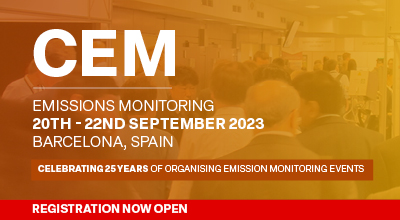| Abstract Title: | Overcoming the SO3 interference on the SO2 and Dust CEMS calibration |
| Presenter Name: | Mr Frans BLANK |
| Co-authors: | Mr Jan MIDDELKAMP |
| Company/Organisation: | DNV GL - Energy |
| Country: | Netherlands |
Abstract Information :
The NOx emission limit values of solid-fuel fired power plants in the Netherlands are as low as 50 mg/Nm3. This requires a large volume of SCR catalyst to be installed, giving a high SO2 to SO3 conversion, of up to two percent. Formation and condensation of sulphuric acid from SO3 partly takes place on the fly-ash and the air-preheater - leading to fouling and corrosion - and within the wet flue gas desulphurization scrubber. A positive effect, provided by SCR catalysts, is further oxidation of mercury, leading to improved capture of ionic mercury in the same scrubber and subsequently low mercury air emissions.
In the European reference method (EN 14791) absorption in hydrogen peroxide solution of both SO2 and SO3/sulphuric acid aerosols takes place. The European technical specification for SO2 measurement by instrumental techniques (TS 17021), allows five techniques to be used as alternative reference methods, provided that equivalence to the reference method is demonstrated. During the QAL2 calibration, the discrepancy between SRM and CEMS due to the presence of SO3 is becoming increasingly relevant at low SO2 concentrations.
The European reference method for Dust (EN 13284-1) also captures sulphuric acid aerosols on the filter and within the sampling lance. These aerosols are not evaporated when drying the filters. Substantial extra weight is added, leading to another discrepancy during Dust QAL2 calibration.
DNV GL has analyzed possible solutions to decrease or overcome this interference on the reference method. The following topics will be presented at the presentation:
Improvement of the reference method for the SO2 CEMS calibration
- Can any of the alternative reference methods show equivalence to the SRM?
- Could the SO3 interference be eliminated by adapting the SRM?
- What effect has the SO3 interference on the CEMS measurement uncertainty?
- What impact does this measurement uncertainty have on compliance?
Improvement of the reference method for the Dust CEMS calibration
- Which sampling technique could prevent the aerosol interference?
- Can a dedicated probe prevent the aerosol interference?
- Is there any means to keep lance and filter temperature at the 160 ⁰C maximum?
- What is the impact on the measurement uncertainty and emission compliance?
As a last resort the SO2 and/or Dust concentration could be increased and/or decrease the SO3 concentration, during the QAL2 calibration by means of the plant operation. The feasibility and impact of that approach will also be shown.

